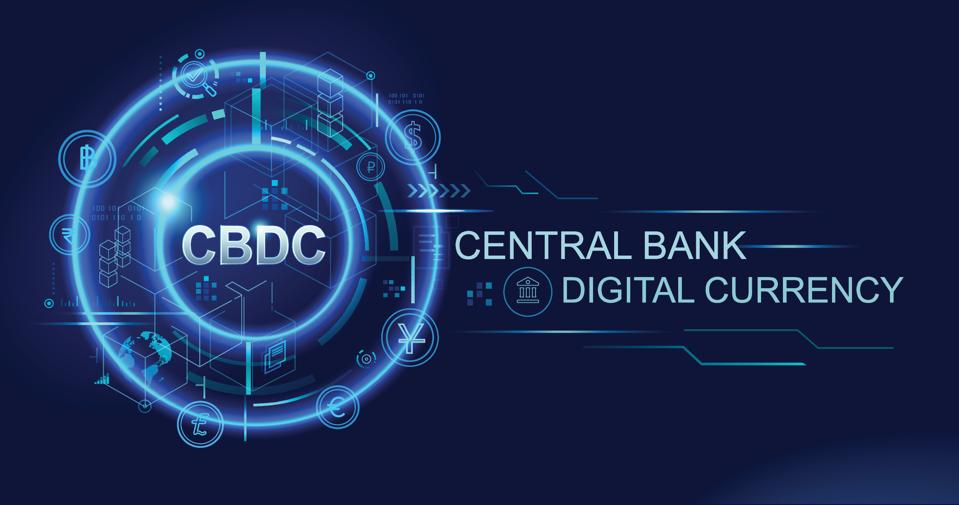29th May 2025 16:50 PM
Context: Why in News?
Central Bank Digital Currencies (CBDCs) known as ‘Digital Rupee‘ (e₹), continue to be a significant topic in global finance, with many central banks, including the Reserve Bank of India (RBI), actively conducting pilot programs and exploring their wider implementation. The RBI has been exploring various use cases, including direct benefit transfers and interbank settlements, to gauge the efficacy and acceptance of its e₹.

What is it?
- Definition: A Central Bank Digital Currency (CBDC) e₹ is a digital form of a country’s fiat currency, issued and backed by its central bank. Unlike private cryptocurrencies (like Bitcoin) or commercial bank digital money (like balances in your bank account), a CBDC is a direct liability of the central bank, just like physical banknotes.
- Legal Tender: It serves as legal tender, meaning it is officially recognized by the government as a valid means of payment.
- Types: CBDCs are generally categorized into two main types:
- Retail CBDC (e.g., India’s e₹-R): Designed for use by the general public (households and businesses) for everyday transactions, similar to physical cash.
- Wholesale CBDC (e.g., India’s e₹-W): Intended for financial institutions (banks, non-bank payment service providers) for interbank settlements and other wholesale transactions.
- Technology: While often inspired by the underlying technology of cryptocurrencies (Distributed Ledger Technology or DLT/blockchain), a CBDC is centrally controlled by the central bank. Some implementations might not necessarily use a blockchain, opting for a centralized database.
- Non-Interest Bearing: Like physical cash, most retail CBDCs are designed to be non-interest-bearing, to avoid disintermediation of commercial banks (i.e., people pulling deposits from banks to hold CBDCs directly).
Importance:
- Sovereign Backing: Provides the safety and trust of central bank money in digital form, eliminating the risks associated with private digital currencies.
- Payment Efficiency: Aims to make payment systems more efficient, faster, and potentially cheaper, especially for cross-border transactions, by reducing reliance on intermediaries.
- Financial Inclusion: Can extend financial services to unbanked or underbanked populations by providing a digital payment method that doesn’t necessarily require a traditional bank account.
- Monetary Policy Tool: Offers central banks a new tool for implementing monetary policy, potentially allowing for more targeted interventions or faster transmission of policy changes.
- Reduced Cost of Currency Management: Could lower the costs associated with printing, distributing, and managing physical cash.
Relevance:
- Modernizing Payment Systems: CBDCs are a crucial step in modernizing national payment systems in an increasingly digital world, complementing existing digital payment infrastructure like UPI in India.
- Competition to Private Cryptocurrencies: Central banks see CBDCs as a stable, regulated alternative to private cryptocurrencies, aiming to bring the benefits of digital money under official oversight.
- Economic Stability: By providing a direct liability of the central bank, CBDCs can enhance financial stability, particularly in times of crisis, by offering a safe alternative to commercial bank deposits.
- Combating Illicit Activities: Depending on their design (e.g., traceability), CBDCs could help in combating money laundering, terrorist financing, and tax evasion, though this raises privacy concerns.
- Direct Benefit Transfers (DBT): In countries like India, CBDCs are being explored for more efficient and leak-proof distribution of government subsidies and welfare payments.
Significance:
- Future of Money: CBDCs represent a significant evolution in the form of money, potentially transforming how individuals and businesses interact with currency.
- Geopolitical Implications: The development and adoption of CBDCs have geopolitical implications, as countries vie for leadership in digital currency innovation and seek to reduce reliance on foreign payment systems.
- Balancing Innovation and Risk: Central banks are carefully navigating the balance between leveraging technological innovation (like DLT) and mitigating potential risks such such as cybersecurity threats, privacy concerns, and financial stability issues.
- Global Standard Setting: International collaboration and discussions are ongoing to establish common standards and interoperability for CBDCs to facilitate cross-border transactions.
- India’s Digital Rupee (e₹): India’s pilot projects for both retail (e₹-R) and wholesale (e₹-W) CBDCs, launched in late 2022, position it among the leading nations exploring this financial innovation, with increasing focus on scaling usage through various incentives and government schemes.
Central Bank Digital Currency is a transformative concept poised to redefine the future of money. While offering numerous potential benefits such as improved payment efficiency, financial inclusion, and enhanced monetary policy capabilities, its careful implementation is crucial to address challenges related to privacy, cybersecurity, and potential disruption to the existing financial system. As countries like India continue their pilot programs, the insights gained will shape the global trajectory of this significant innovation.
"Money is a promise; a digital currency must be a digital promise that is trustworthy, inclusive, and efficient for all."

